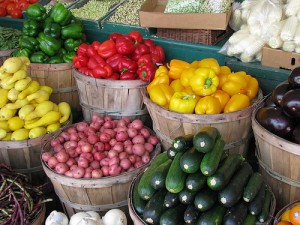Frugality is overwhelming in the beginning. I remember reading blogs from frugal veterans who made it sound easy, but I was terrified. Cutting groceries down to $35 a week, zero-based budgeting, coupon clipping, drug storing? It may have been easy for them, but I didn’t know where to begin.
Take a deep breath. Remind yourself that frugality is a major life change. It’s not going to happen overnight. The best way to get started is to jump in, and don’t try to change your life too drastically in the beginning. Frugality is a gradual change, one that you’ll hopefully be able to maintain long term. It’s okay to start with baby steps.
Here’s how to get started:
Figure out where your money is going.
Before you can cut expenses or create a budget, you need to know what you’re spending and where. Link your bank accounts to Mint.com, and spend normally for a couple weeks. This step was incredibly eye-opening for us in the beginning, and we immediately saw some areas where we could easily cut back.
Create a budget.
Next it’s time to face the dreaded b-word. Don’t be scared, though. Budgeting is actually empowering, especially in the beginning. Don’t try to deprive yourself or make drastic changes at first. Just create a zero-based budget to ensure that you’re not spending more than your income. I use Mint.com to set limits on our spending, and then I track it in real time. Every dollar has a purpose, and anything left over goes to savings or debt. You can always reduce your expenses later. The most important thing in the beginning is getting used to tracking and following your budget.
Open a savings account.
Even if you’re deep in debt and struggling to make ends meet, find a way to start saving something. You can always increase the amount later. What’s important now is establishing the habit. Even if all you can spare is $25 or $50 a month, open an ING savings account separate from your checking and start putting a little money away.
Learn to entertain yourself without spending money.
The first step to having fun without spending money is learning to love your library. If you don’t have a library card yet, go get one right now and start borrowing books and movies for free. Check out a cookbook first. If you’re like my husband and me, eating out is probably one of your favorite date night activities. Learn to have fun cooking for yourselves, and you’ll drastically cut your food budget.
Create menu plans & grocery lists.
When you first start cooking at home, it’s tempting to go overboard at the grocery store. You don’t have to cut your grocery spending to $35 a week to make the most of your shopping trips, though. Find a menu planning strategy that works for you, plan your meals with the grocery ads in front of you, and start buying meats and staples in bulk. You’ll cut your grocery expenses without affecting the quality of food you eat.
It’s okay if you makes some frugal mistakes in the beginning. Learn at your own pace. As you master these basic frugal habits, you’ll gradually find yourself learning new ways to save even more money. It’s an ongoing process for everyone, even the frugal masters.
As long as you’re committed to saving money and reducing debt little by little, your life will continue to improve. Remember, frugality is about improving your quality of life, not just cutting your expenses.

 It was less than a year ago that I was frustrated with our
It was less than a year ago that I was frustrated with our